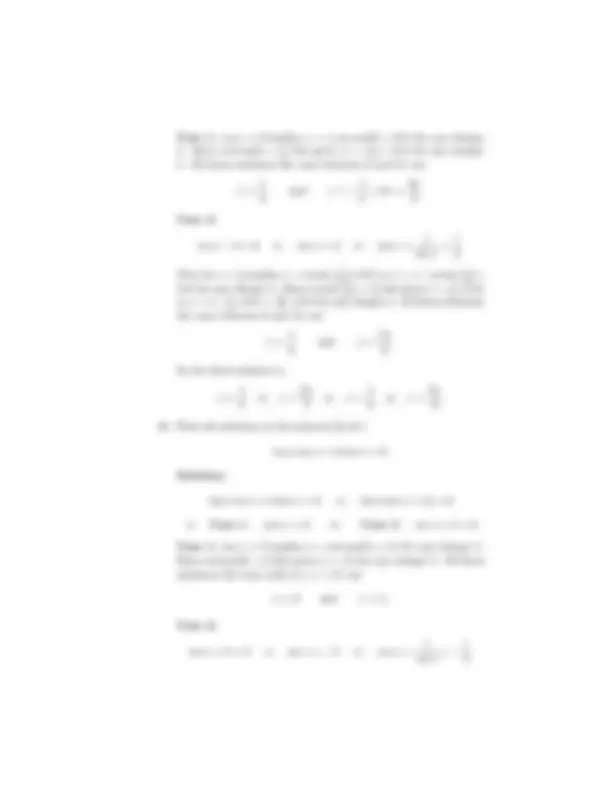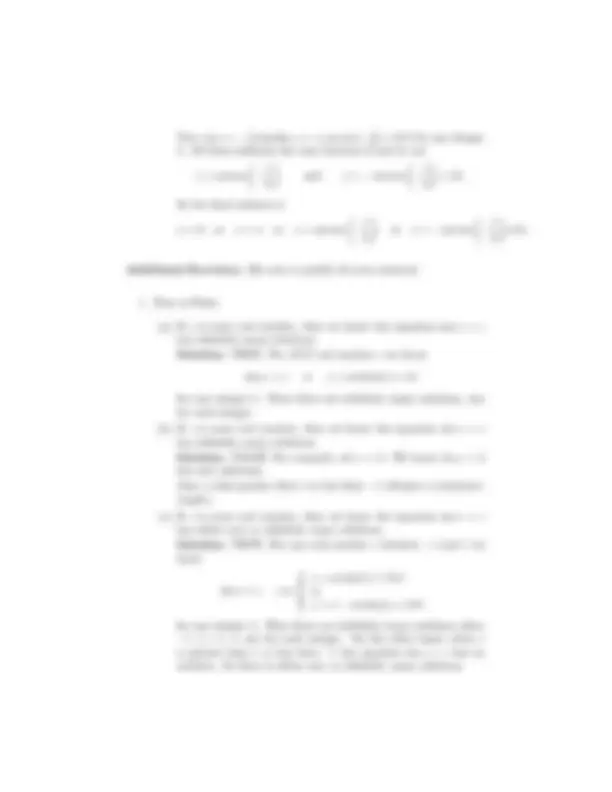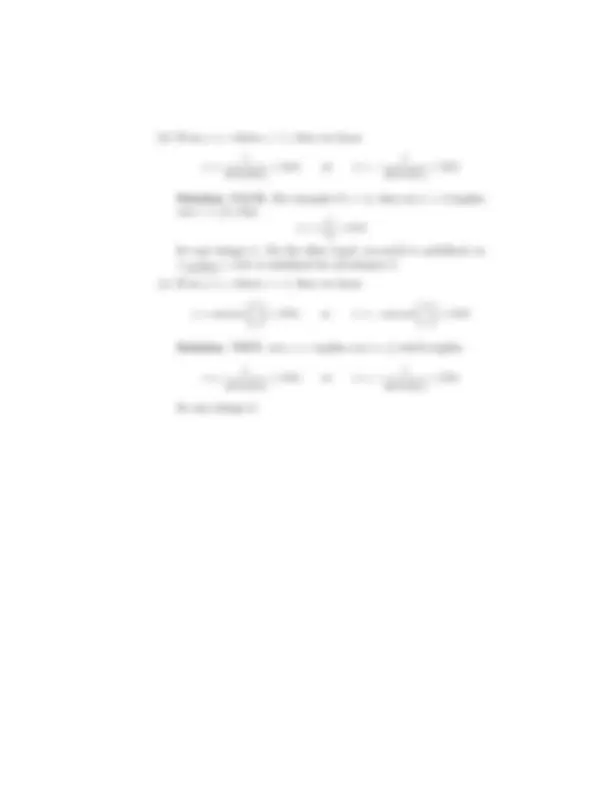





Study with the several resources on Docsity

Earn points by helping other students or get them with a premium plan


Prepare for your exams
Study with the several resources on Docsity

Earn points to download
Earn points by helping other students or get them with a premium plan
Community
Ask the community for help and clear up your study doubts
Discover the best universities in your country according to Docsity users
Free resources
Download our free guides on studying techniques, anxiety management strategies, and thesis advice from Docsity tutors
The solutions to assignment #6 of math 112, focusing on finding all solutions in the interval [0, 2π) for various trigonometric equations. The solutions are presented step-by-step, including the use of the unit circle and inverse trigonometric functions.
Typology: Assignments
1 / 5

This page cannot be seen from the preview
Don't miss anything!




Math 112 Jonny Comes Fall 2005 Assignment # Partial Solutions
From the Textbook:
cot x cos x = cos x.
Solution:
cot x cos x = cos x ⇒ cot x cos x − cos x = 0
⇒ cos x(cot x − 1) = 0 ⇒ Case 1 : cos x = 0 or Case 2 : cot x − 1 = 0 Case 1: cos x = 0 implies x = ± arccos(0) + 2πk for any integer k. Since arccos(0) = π 2 this gives x = ± π 2 + 2πk for any integer k. Of these solutions the ones between 0 and 2π are
x = π 2 and x = − π 2 + 2π =^32 π.
Case 2:
cot x − 1 = 0 ⇒ cot x = 1 ⇒ tan x = 1 cot x
Now tan x = 1 implies x = arctan(1)+πk for any integer k. Since arctan(1) = π 4 this gives x = π 4 + πk for any integer k. Of these solutions the ones between 0 and 2π are
x = π 4
and x = π 4
So the final solution is
x =
π 2 or^ x^ =
3 π 2 or^ x^ =^
π 4 or^ x^ =
5 π
Find all solutions in the interval [0, 2 π).
tan x cos x = cos x.
Solution:
tan x cos x = cos x ⇒ tan x cos x − cos x = 0
⇒ cos x(tan x − 1) = 0 ⇒ Case 1 : cos x = 0 or Case 2 : tan x − 1 = 0 Case 1: cos x = 0 implies x = ± arccos(0) + 2πk for any integer k. Since arccos(0) = π 2 this gives x = ± π 2 + 2πk for any integer k. Of these solutions the ones between 0 and 2π are
x = π 2
and x = − π 2
Case 2: tan x − 1 = 0 ⇒ tan x = 1. Now tan x = 1 implies x = arctan(1)+πk for any integer k. Since arctan(1) = π 4 this gives x = π 4 + πk for any integer k. Of these solutions the ones between 0 and 2π are
x = π 4
and x = π 4
So the final solution is
x =
π 2 or^ x^ =
3 π 2 or^ x^ =^
π 4 or^ x^ =
5 π
Find all solutions in the interval [0, 2 π).
cos x csc x = 2 cos x.
Solution:
cos x csc x = 2 cos x ⇒ cos x csc x − 2 cos x = 0
⇒ cos x(csc x − 2) = 0 ⇒ Case 1 : cos x = 0 or Case 2 : csc x − 2 = 0
Now cos x = − 13 implies x = ± arccos
x = arccos
and x = − arccos
So the final solution is
x = 0 or x = π or x = arccos
or x = − arccos
+2π.
Additional Exercises: (Be sure to justify all your answers)
(a) If c is some real number, then we know the equation tan x = c has infinitely many solutions. Solution: TRUE. For ANY real number c we know tan x = c ⇒ x = arctan(c) + πk for any integer k. Thus there are infinitely many solutions, one for each integer. (b) If c is some real number, then we know the equation sin x = c has infinitely many solutions. Solution: FALSE. For example, set c = 2. We know sin x = 2 has zero solutions. [Any c-value greater then 1 or less than −1 will give a counterex- ample.] (c) If c is some real number, then we know the equation sin x = c has either zero or infinitely many solutions. Solution: TRUE. For any real number c between −1 and 1 we know
sin x = c =⇒
x = arcsin(c) + 2πk or x = π − arcsin(c) + 2πk for any integer k. Thus there are infinitely many solutions when − 1 ≤ c ≤ 1, one for each integer. On the other hand, when c is greater than 1 or less than −1 the equation sin x = c has no solution. So there is either zero or infinitely many solutions.
(d) If sec x = c where c > 1, then we know
x =
arccos(c) + 2πk^ or^ x^ =^ −^
arccos(c) + 2πk
Solution: FALSE. For example if c = 2, then sec x = 2 implies cos x = 1/2, thus x = ± π 3 + 2πk
for any integer k. On the other hand, arccos(2) is undefined, so ± (^) arccos(^1 c) + 2πk is undefined for all integers k. (e) If sec x = c where c > 1, then we know
x = arccos
c
c
Solution: TRUE. sec x = c implies cos x = (^1) c which implies
x = 1 arccos(c)
2πk or x = − 1 arccos(c)
2πk
for any integer k.